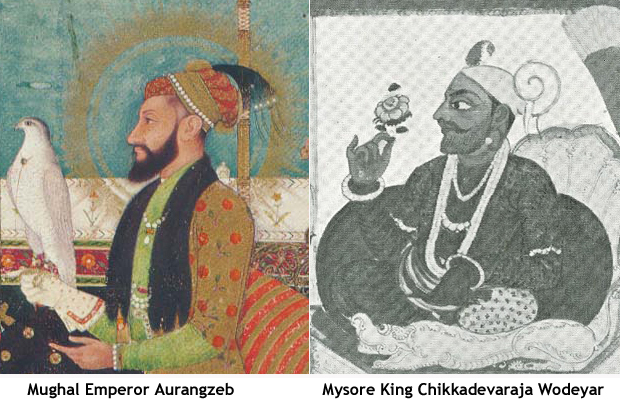'Ghosha jhatka gaadi'- How an illustrious Hindu King of Mysore helped educate Muslim girls
As told by Hajee Muneer Ahmed Saheb to Ameen Ahmed Tumakuru, in October 2016.
 |
| A portrait of His Royal Highness Nalvadi Krishnaraja Wodeyar, Maharaja of Mysore at Government Empress Higher Primary School, Tumakuru, Karnataka. Pic.: Ameen Ahmed Tumakuru, 2016. |
"In 1930s, under Nalvadi Krishnaraja Wodeyar's rule the Ghosha jhatka gaadi (or horse cart) was introduced in Tumakuru town, then a part of Mysore Province in British India. A beneficiary of that was my Phuppu jaan (paternal aunt). She passed Grade 7 in that decade. Nearing a 100-years old, she is the oldest living member of our extended family now. As sharp ever, a conversation with her even today will reveals the quality of the education she received. She was a beneficiary of the many Urdu schools that flourished under this benevolent Maharaja's rule."
 |
| Steps leading to the Government Empress Higher Primary School located at the Old Market Square, Tumakuru City, as seen in October 2016. Pic.: Ameen Ahmed Tumakuru |
 |
| Government Empress Higher Primary School, Tumakuru as seen from outside in October 2016. Pic.: Ameen Ahmed Tumakuru |
 |
| Government Empress Higher Primary School, Tumakuru in October 2016. Pic.: Ameen Ahmed Tumakuru |
 |
| A stone indicating 1861 CE, the year in which Government Empress Higher Primary School at the Old Market Square, Tumakuru City was built, as seen in October 2016. Pic.: Ameen Ahmed Tumakuru |
"The Maharaja's administration went a step ahead to accommodate females of the Muslim faith. Realising that Muslim girls observed Ghosha or Purdah (full veil), the 'Ghosha Jhatka Gaadi' was introduced. A horse cart with a cloth concealing the girls inside would visit houses of Muslim girls who attended middle and high school, to transport them to the schools. This way many generations of Muslim girls accessed modern, Western education."
 |
| Inside the Government Urdu Higher Primary School, Old Market Square, Tumakuru City Pic.: Ameen Ahmed Tumakuru |
 |
| Inside the Government Urdu Higher Primary School, Old Market Square, Tumakuru City. Image taken in Oct. 2016. Pic.: Ameen Ahmed Tumakuru |
Note by author: Nalvadi ruled Mysore Kingdom from 1894 to 1940 CE The entire next generation of Phuppu Jaan attained University education in 1960s and 70s thanks to the infrastructure set up by him and other Wodeyar kings, as well as the later state governments. Two of her sons became engineers and one is a doctor. Her female children attained University education. Other females of the same generation, her nieces, attained University education. Many males obtained professional education in the fields of Engineering and Medicine. This includes a luminary in Aeronautical Science and Sufism.
A video interview in Kannada of Hajee Muneer Ahmed Saheb was made by Shri. Arenalli Shivashankar Dharmendra Kumar, popular as Dharmi, in Sep. 2021. You can watch the relevant portion from 20' 51'' to 23' 15'' in the below link.






Comments
Post a Comment
Thank you for visiting this blog and sharing your thoughts.